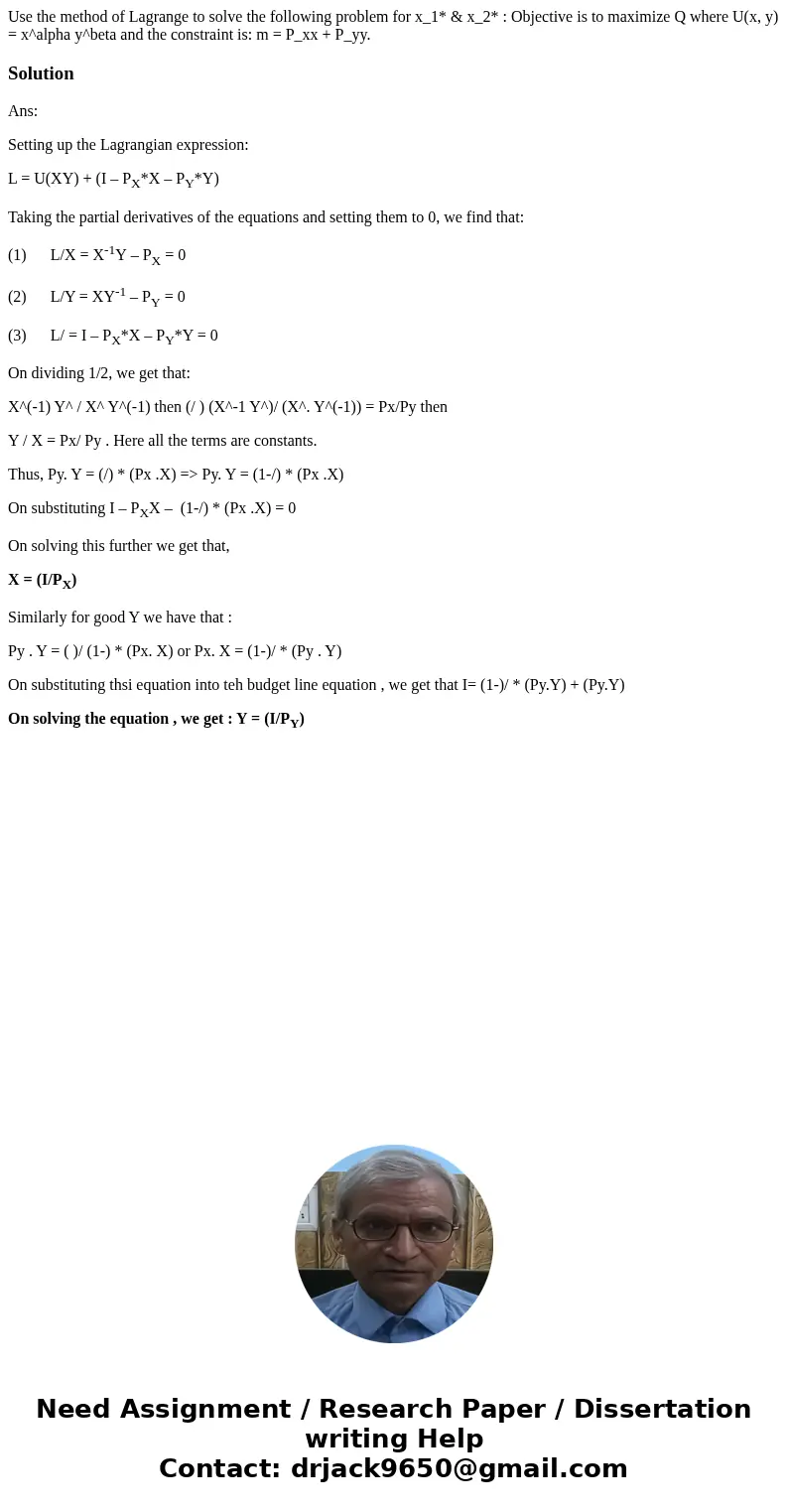Use the method of Lagrange to solve the following problem fo
Solution
Ans:
Setting up the Lagrangian expression:
L = U(XY) + (I – PX*X – PY*Y)
Taking the partial derivatives of the equations and setting them to 0, we find that:
(1) L/X = X-1Y – PX = 0
(2) L/Y = XY-1 – PY = 0
(3) L/ = I – PX*X – PY*Y = 0
On dividing 1/2, we get that:
X^(-1) Y^ / X^ Y^(-1) then (/ ) (X^-1 Y^)/ (X^. Y^(-1)) = Px/Py then
Y / X = Px/ Py . Here all the terms are constants.
Thus, Py. Y = (/) * (Px .X) => Py. Y = (1-/) * (Px .X)
On substituting I – PXX – (1-/) * (Px .X) = 0
On solving this further we get that,
X = (I/PX)
Similarly for good Y we have that :
Py . Y = ( )/ (1-) * (Px. X) or Px. X = (1-)/ * (Py . Y)
On substituting thsi equation into teh budget line equation , we get that I= (1-)/ * (Py.Y) + (Py.Y)
On solving the equation , we get : Y = (I/PY)

 Homework Sourse
Homework Sourse